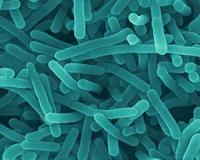 |
Vilmer, Argentina (AFP) Dec 10, 2010 A group of small farmers and shepherds in this northern Argentine town have been protesting the destruction of forests to make way for soy crops by routinely blocking a major highway. Some 20 families have been living for more than a month next to a highway outside Vilmer, some 1,000 kilometers (620 miles) northwest of the capital Buenos Aires, and block the road once a day to show their discontent. "If they kick us off the land of our ancestors to plant soy, the only thing left for us is to go to the towns," said protest leader Guido Corvalan. Argentina is the world's largest exporter of soybean oil, and large soy farmers are snapping up property even in the hilly rural province of Santiago del Estero, where land is cheap but conditions less than ideal for soy growing. In the process they are clearing out the trees -- especially the red quebracho (Schinopsis lorentzii), a tree native to the area between northern Argentina, Paraguay and Bolivia. The thin, tall tree is known for its especially hard wood and for its extract, which is used for leather tanning. Most of Argentina's soy production goes to China: Argentina supplies 70 percent of China's soybean oil imports (4.6 million tons in 2009), representing some two billion dollars a year. The soy farmers are also evicting the local farmers and shepherds, many of whom have lived on the land for generations but have no ownership documents. The protesters say they are often threatened by thugs hired by large landowners. "Foreign companies and powerful Argentine corporations are coming to the region," said Luis Recio, another protester. "Their intention is to buy and buy. Or directly move to compulsory eviction." According to Recio, "the only thing left for us farmers is to resist. We only want to halt the illegal sale of land and protect the forests to keep our animals." In March, a 31 year-old woman died of a heart attack as she tried to stop a bulldozer from destroying a forested area. The bulldozer was protected by armed men, a sign that the landowners were expecting resistance. But locals are puzzled why the area is so sought after. Rain is rare in the area, and the soil is not ideal for growing soy. "I don't understand," said Omar Pranzoni, head of the local forestry department. "In five years the soy farmers may be lucky enough to get a crop only once." Land however is cheap, about 150 dollars a hectare compared to 10,000 dollars a hectare in the damp soil pampa area further south, Pranzoni told AFP. "Those people who are clear cutting have no idea of what they are doing," said Pranzoni. "It takes 50 years to re-grow the forest." By law, property owners need a special permit to cut down quebracho trees. But landowners get around the limits by surrounding their property with tall trees that block the view from outside, then unleashing the bulldozers. Some 60,000 hectares (148,200 acres) of land have been legally clear-cut in the province, Pranzoni said, a figure he believes is about one-sixth of the total land that has actually been razed. At a Catholic church in nearby Pozo Hondo, population 2,000, the priest, Father Sergio, helps the locals deal with the dislocation. "People come to the church for their day-to-day problems -- concrete issues like land, food, evictions," said the priest. "They usually don't come for the religious services." Locals rely on Radio La Merced, a station located next to the church, for the latest local news on clear cutting. Often they call the station to report bulldozers in the area, allowing protesters to rush to a threatened site in an attempt to stop the destruction.
Share This Article With Planet Earth
Related Links Farming Today - Suppliers and Technology
 Nanoparticle Gives Antimicrobial Ability To Fight Listeria Longer
Nanoparticle Gives Antimicrobial Ability To Fight Listeria LongerWest Lafayette IN (SPX) Dec 09, 2010 A Purdue University research team developed a nanoparticle that can hold and release an antimicrobial agent as needed for extending the shelf life of foods susceptible to Listeria monocytogenes. Yuan Yao, an assistant professor of food science, altered the surface of a carbohydrate found in sweet corn called phytoglycogen, which led to the creation of several forms of a nanoparticle that c ... read more |
|
| The content herein, unless otherwise known to be public domain, are Copyright 1995-2010 - SpaceDaily. AFP and UPI Wire Stories are copyright Agence France-Presse and United Press International. ESA Portal Reports are copyright European Space Agency. All NASA sourced material is public domain. Additional copyrights may apply in whole or part to other bona fide parties. Advertising does not imply endorsement,agreement or approval of any opinions, statements or information provided by SpaceDaily on any Web page published or hosted by SpaceDaily. Privacy Statement |